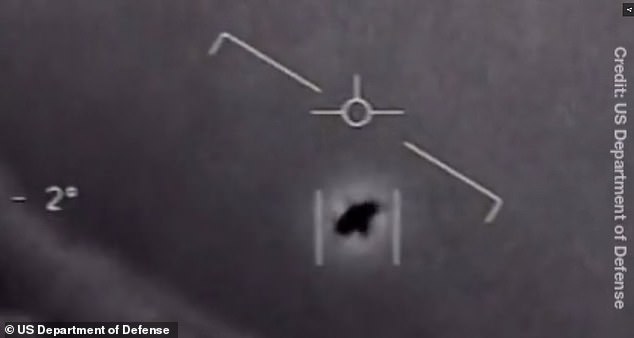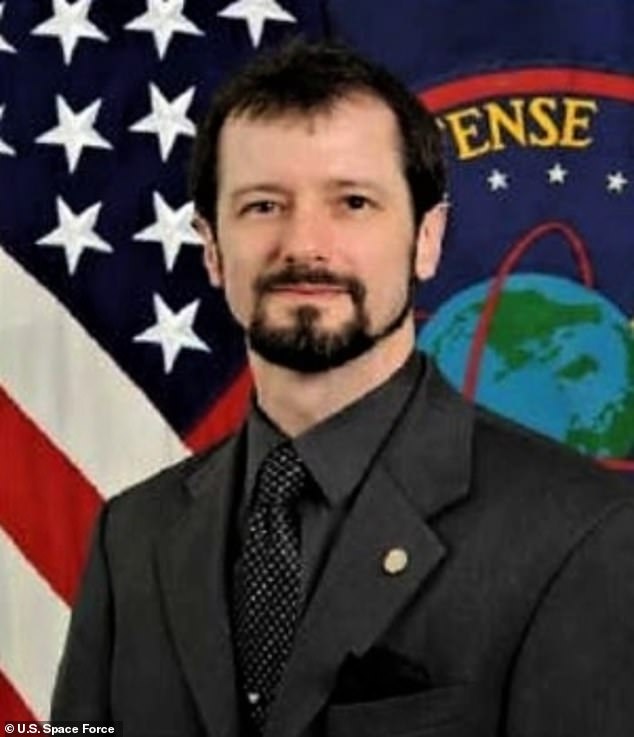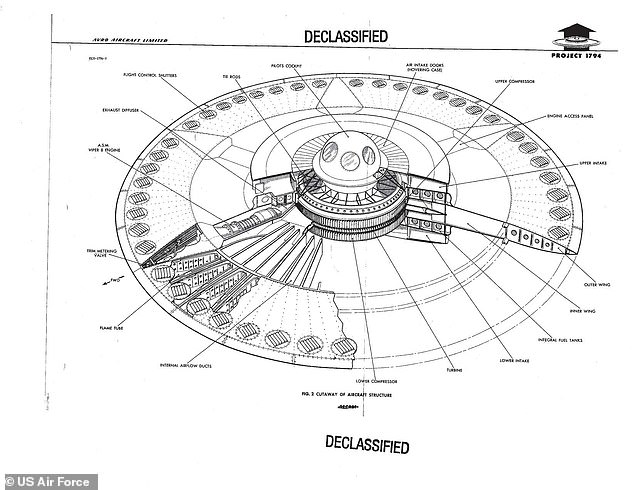Pentagon’s outgoing UFO chief says he believes extraterrestrial life DOES exist – but that you’d have to go to Mars or beyond to find it
The outgoing Pentagon UFO chief has said he believes extraterrestrial life exists, but you’ll have to go to Mars or beyond to find it.
Dr. Sean Kirkpatrick, a longtime laser and materials physicist and head of the Pentagon’s UFO-hunting All-domain Anomaly Resolution Office (AARO), delivered his assessment following news of his retirement from government service.
Kirkpatrick’s eighteen-month tenure as AARO’s first-ever director has been riddled with controversy, as expected for a tenure once relegated to the scientific fringe.
Over the summer, there was a congressional hearing into claims that the US government is covering up its knowledge of alien craft – including the reemergence of the ‘Tic Tac’-shaped UFO saga from 15 years ago.
Kirkpatrick’s AARO was founded in July 2022. And he said his mission is to “raise the level of conversation” around aliens and their potential existence.
Dr. Sean Kirkpatrick, longtime laser and materials physicist and head of the Pentagon’s UFO-hunting All-domain Anomaly Resolution Office (AARO), delivered his assessment following news of his retirement from government service

The description ‘Tic Tac’ was used for the ‘perfectly white’ wingless elongated fabric captured in a cockpit flight video (photo)
At the request of Politics If aliens really exist, he said, “That’s a great question. I like that question.
“Number one, the best thing that can come out of this job is proving that aliens exist, right? Because if we don’t prove there are aliens, we’ll find evidence of other people doing things in our backyard. And that’s not good.
‘Second, from a scientific perspective, the scientific community will agree that it is statistically invalid to believe that there is no life in the universe, no matter how large the universe and how large the number of galaxies, solar systems and planets too.
“That’s part of NASA’s mission to look for that life. However, the likelihood that that life is intelligent and that it found Earth and came to Earth and crashed into the United States repeatedly is not very likely.
“So part of what we’ve tried to do, and part of what I’ll continue to do until I’m done, is raise the level of the conversation.
“If you talk to NASA or the European Space Agency, and you’re talking about looking for life in the universe, it’s a very objective, very scientifically sound discussion and discourse.

Kirkpatrick’s eighteen-month tenure as AARO’s first-ever director has been riddled with controversy, as expected for a mandate once relegated to the scientific fringe
‘As that discussion gets closer to the solar system, somewhere around Mars, it turns into science fiction. And then when you get even closer to Earth and enter the Earth’s atmosphere, it becomes a conspiracy theory.
‘We have to change the level of the (public) conversation. It’s one of the reasons why we’ve brought in academia to work on some scientific papers looking at the likelihood of these things, and what signatures are associated with them?
“So we can compare what we do based on scientific evidence and scientific facts, and not on rumors and finger pointing and government cover-ups and conspiracies without any evidence of it.”
Kirkpatrick also revealed that he has had more than 30 whistleblowers “come in and talk,” adding, “We investigated every single one of them, every single story, every lead that provided any substantive evidence that we could go after.”
According to the director of the Pentagon’s UFO Research Office, “The best thing that can come from this job is to prove that aliens exist.”
The alternative to what would be a literally earth-changing discovery of alien life exploring our own planet would be for a rival foreign power to “do things in our backyard,” he said.
Dr. Kirkpatrick added, “And that’s not right.”
While some UFO whistleblowers now accuse Kirkpatrick of fostering an “atmosphere of disinterest,” others have suggested that his superiors are stonewalling AARO’s efforts, even as some have described “really positive” experiences with the office.
“I’m ready to move on,” Kirkpatrick told Politico after officially confirming his retirement. “I accomplished everything I said I was going to do.”

Whistleblowers with knowledge of a secret UFO “reverse engineering” program have chosen to testify before the Senate Intelligence Committee, in part because of their reported distrust of Dr. Kirkpatrick and his UFO office in the Pentagon. Above is a page from Project 1794, released in 2012
Dr. Kirkpatrick added that there are lingering tasks he hopes to have completed — including AARO’s Congressionally directed “Historical Record Report” on UFOs, which will be presented to Congress in June 2024, more than six months after Kirkpatrick’s departure.
At a press conference last Halloween, Kirkpatrick announced a new secure reporting mechanism designed to help AARO investigate claims of alleged top secret and potentially illegal UFO programs run by the U.S. government.
“The reporting mechanism is intended for current or former U.S. government employees, military personnel or contractors with direct knowledge of alleged U.S. government programs or activities related to UAP (UFOs) dating back to 1945,” he said.
Since UFOs exploded back into the public consciousness with a series of revelations in the New York Times in December 2017, government officials, scientists and devotees have reframed the mysteries as unidentified aerial phenomena, or anomalous phenomena: “UAP.”
The new name hopes to bring caution and reduce preconceptions about the true nature of these mysteries in the sky.
When asked at the Halloween press conference whether AARO has contacted officials of hostile foreign nations in an effort to bundle UAP data, Dr. Kirkpatrick that the concept was a non-starter from a national security perspective.
“We certainly haven’t approached opponents for a variety of reasons, not the least of which is because they are opponents,” Kirkpatrick said.
While AARO’s annual UAP report, released in October, found that “none” of the hundreds of military UFO cases have been “positively attributed to foreign activities,” Kirkpatrick raised concerns about telling but less concrete evidence.
“I’m concerned from a national security perspective,” Kirkpatrick told CNN ahead of the report’s release.
“There are some indicators that can be attributed to foreign activities, and we are investigating them very intensively,” he said.
This time last year, a classified 22-page report compiled by the Office of the Director of National Intelligence (ODNI) described hundreds of unsolved cases, some involving “orbs” captured on drone cameras and then “suddenly expelled” shot into the air’. screen.’
Some non-governmental groups, including OSINT specialists Bellingcat, have offered prosaic explanations for one of these ‘spheres’ – but Kirkpatrick, in an article with Harvard physicist Dr. Avi Loeb openly speculated that these UAP might be alien probes.
Despite serious concerns from AARO’s soon-to-depart director that the solution to the UAP mystery could turn out to involve advanced technology flown by a foreign power, evidence exists that these “metal spheres” even predate the era of the Cold War.
A 1944 Newsweek article entitled “The Silver Sphere Puzzle” explored similar cases of flying orbs during World War II, as did an Associated Press report headlined “Silver Balls Seen Over Reich Intrigue Science.”
Even then, journalists and researchers suspected it was a wartime anti-radar device from one of America’s then-enemy nations, Nazi Germany.
“It could be that the floating silver balls that American pilots encountered over the Reich are yet another German attempt to create interference for radio communications,” the AP’s wartime radio editor wrote.
“The most common misconception is that (the possible phenomena) are all the same and all extraterrestrial,” Kirkpatrick told ABC News last July, “and neither is true.”
